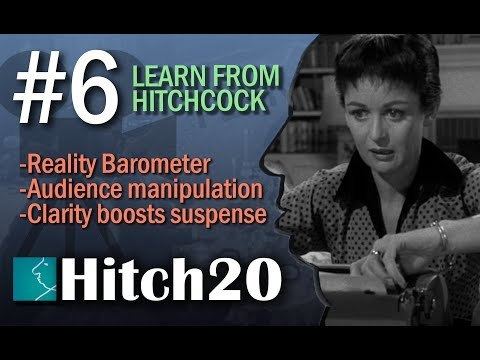Name Jan Olsson | ||
 | ||
Jan Olsson (born 1952 in Helsingborg) is a Swedish film scholar, professor of cinema studies and former head of department at Stockholm University. He has been a visiting professor at the University of Southern California, UCLA, Northwestern University, Utrecht University and the City University of Hong Kong. Olsson is the founding editor of John Libbey's book series Stockholm Studies in Cinema, and the founding editor of the scholarly journal Aura Film Studies Journal. Along his trajectory of archival research, he has found copies of two previously lost early films, Buster Keaton's The Cook and Fatty Arbuckle's A Reckless Romeo. He currently leads the research project “From Business Commodities to Revered Cultural Heritage: Global Media, Vernacular Strategies, and Cultural Negotiations,” funded by a grant from Vetenskapsrådet (the Swedish Research Council). He is also responsible editor of Acta Universitatis Stockholmiensis' cinema studies series—distributed by Stockholm University library.
Contents

Professor Olsson has published widely on various aspects of film and media studies, including the changes brought by the DVD. He has argued for the formation of a new media archive in Sweden. His primary research interests are historical reception and emerging media in cross-cultural perspectives, including early American and Swedish cinema and media. In addition to numerous articles, many for the journal Film History, his books include Svensk spelfilm under andra världskriget (1979), Från filmljud till ljudfilm (1986), Sensationer från en bakgård (1988), Nordic Explorations (co-edited with John Fullerton, 1999), Allegories of Communication (co-edited with John Fullerton, 2004), Television after TV (co-edited with Lynn Spigel, 2004), Media, Popular Culture, and the American Century (co-edited with Kingsley Bolton, 2010), and Los Angeles Before Hollywood: Journalism and American Film Culture, 1905 to 1915 (2008).
His most recent book, Hitchcock à la Carte, was published in March 2015 (Duke University Press). In a recent talk at the Unit of Criticism and Interpretive Theory, University of Illinois, he presented this project in which he argued that like the culinary practices and standards set in his personal kitchen, Hitchcock’s cinema required the same kind of preparation and perfect blend of ingredients. Through this combination of food art and cinema, Hitchcock created his iconic, international persona using a bizarre and untraditional connection with his sense of taste and love of the kitchen. Hitchcock’s underrepresented television career-of particular interest to Olsson-played a crucial part in developing Hitchcock’s public persona. It was television, he argued, that truly shaped Hitchcock into a global figure.
Together with Richard Abel, they have extensively promoted the use of newspapers in the research of early cinema, raising awareness about the benefits of digitizing the material for researchers to access worldwide. He argued that Audiovisual Archives has to open up to the Academic Research, educational purposes and public access. He proposed another framework for understanding film cultural change, according to which this process is driven by the rational negotiating of film culture’s overall cultural position. This framework is inspired by cultural studies in general and Raymond Williams in particular, suggesting that early film culture can be culturally mapped—internally and in relation to the overall culture—by using Williams’s categories of the “emergent,” the “residual,” and the “dominant.”
Jan Olsson took an active part by giving the keynote speech in the FIAT/IFTA local seminar in Santiago de Chile, Chile in 1998, lecturing about the importance of preservation of movies and the academic studies of the movies. He stressed how access to audiovisual archives is necessary to enable students to study the old films. In his continuous strive to create awareness of the importance of archival material as cultural heritage, professor Olsson was responsible for the 2001 series of film historical documentaries I tuppens tecken [In the name of the Rooster] - based on a world unique collection of very early Pathé fiction films hold in the SVT archives.
[..]Of course we haven´t ever been unaware of the quality of our historical collections. It has been of great importance for the programme production in general, since we acquired the footage in the late sixties. But a few years ago, Professor Jan Olsson of the Stockholm University Department of Cinema Studies contacted me on a special matter. He was anxious to get the permission to show a number of our very early Pathé fiction films - as celluloid films - at a seminar for his colleagues from all over the world at the Swedish National Archive. It was Professor Olsson and his colleagues that made us aware of that a great number of our Pathé films were absolutely world unique, either as the only remaining copies or as copies more complete and in better condition than anywhere else known in the film literature. Here started the development of a close cooperation between the SVT and the University in fund raising for making the pre-broadcast material and catalogue more accessible to the academic public and of course in the end - the programme production. I believe in the dialectics of everyday life. Through letting the scholars into the archives, besides it resulting in a mutual exchange of information about the material, it also created new ideas for programming based on the material. (Lasse Nilsson, SVT)
.
Awards and nominations
(2006) Allegories of Communication: Intermedia Concerns from Cinema to the Digital - nominated as book of the month by the Resource Centre of Cyberculture Studies at University of San Francisco. (2002) Finalist and special commendation for the Kraszna- Krausz Moving Image Book Award. Awarded for Nordic Explorations: Film Before 1930 (1998) Belle Van Zuylen Honorary Professor at University of Utrecht (1998) Robin Hood Medal for outstanding research in film history. Awarded for From Film Sound to Sound film
